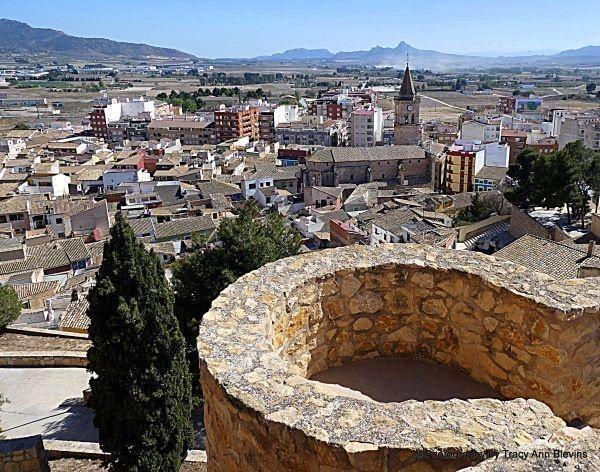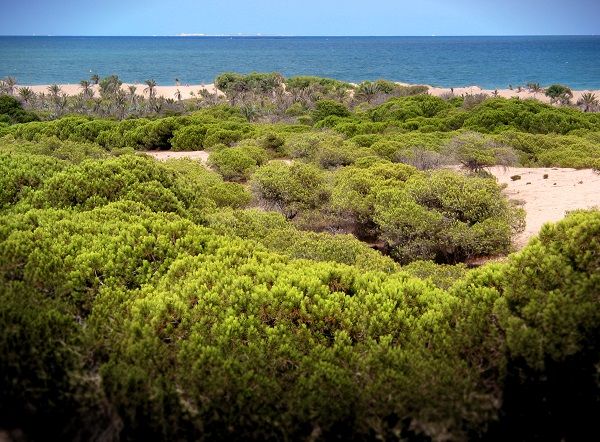All about Villena - Costa Blanca
All about Villena which is pronounced the same as "Vienna" by some local Valencians or "Bienna". Villena is a medium-sized city in the province of Alicante (Northwest) and part of the Valencian Community, 95km from Benidorm. It is the capital of the comarca of the Alto Vinalopó.
Villena is the birthplace of the composer Ruperto Chapí.
Anyone driving past on the Madrid-Alicante autovía cannot help but notice the 12th-century castle towering majestically over the town.

The main sites to see here are:-
Castle of la Atalaya, built by the Moors in the 11th century
Tall and stately, the three storeys of Villena castle rise up proudly from the top of Mount San Cristobal, overlooking the capital of the region.

This is the largest castle on the Vinalopo Castle Route and one of the most impressive in the Province of Alicante. The name means vantage point or Castle of the Watch, also known as the Castle of the Pies Negros ('black feet') or simply Villena Castle, and has a total of 12 turrets along the outer fortress walls. This is a sturdy military building of Arab origin, It has no moat, and is built with a double walled enclosure.
All about Villena
Due to its great historical value and unique qualities, the castle was declared a "Historical Artistic Monument" in 1931. Restoration and archaeological excavations began in 1958 and continued on and off until 1990.
The outer wall is reinforced with twelve turrets along the outer fortress walls. The inner wall, which is taller, contains the imposing keep located at the southeast.

The tower has a square floor plan and is divided into four sections; the two lower sections are built of Almohad masonry, and the two upper levels of stonework.

The first floor conserves the traditional Almohad star-shaped ribbed vault, which makes it practically unique among Hispanic military architecture. It is topped with cantilevered turrets on the corners and sides.
Entrance fee - Normal price: 3.00€, reduced price: 1,50€ (groups, students, 65+) children under 7: FREE

Opening Hours
Tuesday to Sunday 10:00 to 14:00 guided tours upon reservation at: 10:30, 11:30 and 12:30.
Tuesday to Saturday. Open from 16:00 to 18:00 Guided tour upon reservation at 16:30.
Closed: Monday all day and Sunday afternoons and holidays.
All about Villena
Municipal Palace (Town Hall) - Pl. de Santiago, nº 2
Built by Pedro de Medina at the beginning of the XVI century as a place of residence for the magisterial beneficiaries of the Temple of Santiago (abbey house), it was transferred in 1576 by the ecclesiastical town council, and acquired by the City Council for Casas Consistoriales, or a town hall.
The importance of the building is due to its Renaissance character, clearly seen on the façade, in two of its windows and in the double gallery patio with built-in staircase.

Its construction is attributed to Jacobo Florentino, a sculptor who had worked with Michelangelo in Florence, and after working in Granada and Murcia, died in Villena in 1526
In the middle of the 20th century, the upper part of the façade was enlarged, and the patio was also restored. The Municipal Palace of Villena was declared a Nacional Artistic Historical Monument in 1968.
Open Monday to Friday 09:00 to 14:00, Saturday, Sunday and Fiesta Days from 11:00 to 14:00
Santiago Church - Plaza de Santiago - Suitable for people with reduced mobility.
The construction of the archdeacon's church of Santiago dates from the 13th century. At the end of the 15th century, work was begun under the patronage of the Medina family to extend the church. These were concluded in the 16th century and involved the introduction of some of the church's most noteworthy Renaissance elements, such as the doorway into the sacristy, the chapter room and the baptismal font.

It is one of the most important Gothic-Renaissance sites in the Region of Valencia. Its floor plan has three naves, and there is a beautiful baptismal font in the interior. It was declared a National Historic-Artistic Monument in 1931.

Open for worship (free entrance): Monday to Thursday from 11:00h to 12:00h.
Masses from Monday to Saturday at 8:30h and 20:00h. Sundays and holy days at 8:30h, 12:00 and 20:00h.
Guided tours: Opening hours and tours from the Tourist Info Office in Villena, in Plaza de Santiago (next to the church)
From Tuesday to Saturday at 12:00 h and 13:15 h (duration 30 min).
On 25th December, 1st January and 6th January the guided tour will not be available due to holidays.
Price: 1€ (0.50€ with discount)
Santa Maria Church - Plaza Sta. María, 10
This church was built in the XVI century on the old Muslim mosque of Villena, at which time it became the church of El Rabal, the suburb outside the medieval walls of Villena.

The church consists of a single nave with a gothic ribbed vault supported by arches with Renaissance reliefs
The beautiful main façade stands out, framed by a baroque doorway that houses the Virgin of the Assumption in a niche. The church is declared a site of local relevance.
Villena Archaeological Museum- currently CLOSED due to being relocated.
Founded by archaeologist José María Soler García, which contains the Treasure of Villena.

The Treasure of Villena is the largest Bronze Age treasure hoard ever found on the Iberian Peninsula, and the second-largest ever found in Europe (the largest being Royal Graves hoard found in Mycenae, Greece). It consists of 59 items of various precious materials, such as gold, silver, iron, and amber. The entire hoard weighs almost 10 kg. The gold objects—which comprise about 90% of the collection—are made of 23.5 carat gold and include eleven bowls, three bottles, and 28 bracelets.
Getting to Villena
The easiest way is by car, but Alicante, Alcoy, and Elche have bus lines that connect to the town. Villena has a train station that connects to Alicante, Murcia, and Valencia. There is also a station on the high-speed AVE train between Alicante and Madrid. However, this station is situated quite a distance outside of the town so you would need a taxi to reach the town centre.
Whilst in this area visit Biar which also has an impressive castle and is also on the Vinalopocastle Route.
If coming from Benidorm/Alicante direction you could also visit Jijona castle and Turron Museum.
Find other places to visit on the Costa Blanca and beyond here.










